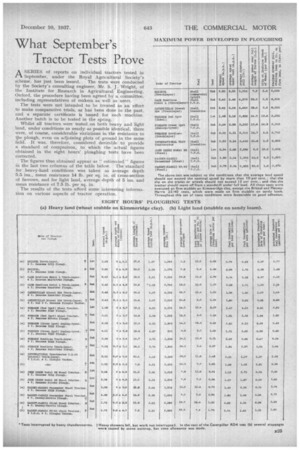What September's Tractor Tests Prove
Page 7

If you've noticed an error in this article please click here to report it so we can fix it.
A SERIES of teports on individual tractors tested in t-1 September, under the Royal Agricultural Society's scheme, has just been issued. The tests were conducted by the Society's consulting engineer, Mr. S. J. Wright, of the Institute for Research in Agricultural Engineering, Oxford, the procedure having been agreed by a committee,. including representatives of makers as well as users.
The tests were not intended to he treated as an effort to make comparative trials, as has been done in the past, and a separate certificate is issned for each machine. Another batch is to be tested in the spring.
Whilst all tractors were tested on both heavy and light land, under conditions as nearly as possible identical, there were, of course, considerable variations in the resistance to the plough, even on adjoining plots of ground in the same field. It was, therefore, considered desirable to provide a standard of comparison, to which the actual figures obtained in the eight hours' ploughing tests have been corrected.
The figures thus obtained appear as " estimated" figures in the last two columns of the table below. The standard for heavy-land conditions was taken as average depth 5.5 ins., mean resistance 14 lb. per sq. in. of cross-section of furrows, and for light land, average depth ot 5 ins, and mean resistance of 7.5 lb. per sq. in.
The results of the tests afford some interesting information on various aspects of tractor operation.




























